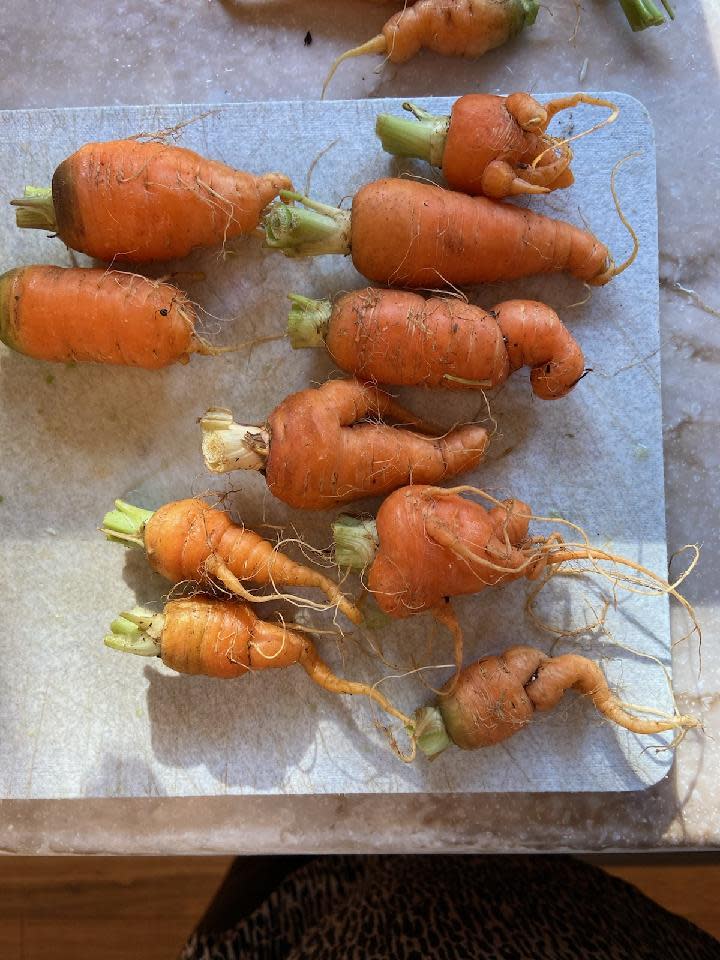Over the Garden Fence: Giving ugly food a chance
Right before Thanksgiving there was a chance to go shopping one more time as part of my connection to The Edible Landscapes. My bag was loaded with organic treasures, spaghetti squash, cabbages, mixed greens, onions, spinach and carrots.

Oh, I was excited about the carrots. This small root crop had always come with a mild, flavorful carrot taste. Once home, the bag was dumped out for cleaning. Their appearance brought on a comical response. The carrots were humorous from one that looked like a miniature swirled ice cream cone to a saguaro cactus.
There was a real winner with five roots. Contortionists — all of them. But I found them charming and delayed use until the grandchildren could see them. They chuckled a bit then asked what I planned to do with them. Eat them, of course.
This was not easy because of the strength of character of each one. Something in me just did not want to slice a single one. It was partially because they exhibited life itself.
'Give ugly food a chance'
Every one of us is a character, so different from one another. Each of us has worth. These carrots grew in the way they could, nourished by the same soil, sun and moisture. They had worth.
This past week while hunting for information on an ODNR site, what should appear but a release from the Ohio State University urging us to "give ugly food a chance." There on the page was a row of carrots slightly weird. Mine were more aberrated yet the word ugly had not been in my thinking.
Reading on, I learned about 41% of unharvested food is edible but unmarketable because of its appearance. That is interesting. "Ugly carrots' nutritional quality equals that of blemish-free produce," stated the author Emily Caldwell. When we purchase from a farmers' market, we are not seeking cosmetic perfection. There is room for some imperfection because we do not see it as that but more as "naturalness."
The point Caldwell was trying to make is the imperfections should not lead to a reduced price. Acceptance of those products that seem a bit weird are full of nutrients and purchasing them reduces food waste. Those are two good reasons. Blend a bag of perfection with some imperfection and it will be purchased.
Those character carrots found their way into chicken noodle soup were roasted with beef and and added nourishment to salads.
Long live organically grown produce normal or contorted.
Mary Lee Minor is a member of the Earth, Wind and Flowers Garden Club, an accredited master gardener, a flower show judge for the Ohio Association of Garden Clubs and a former sixth grade teacher.
This article originally appeared on Bucyrus Telegraph-Forum: Over the Garden Fence: Giving ugly vegetables like carrots a chance

